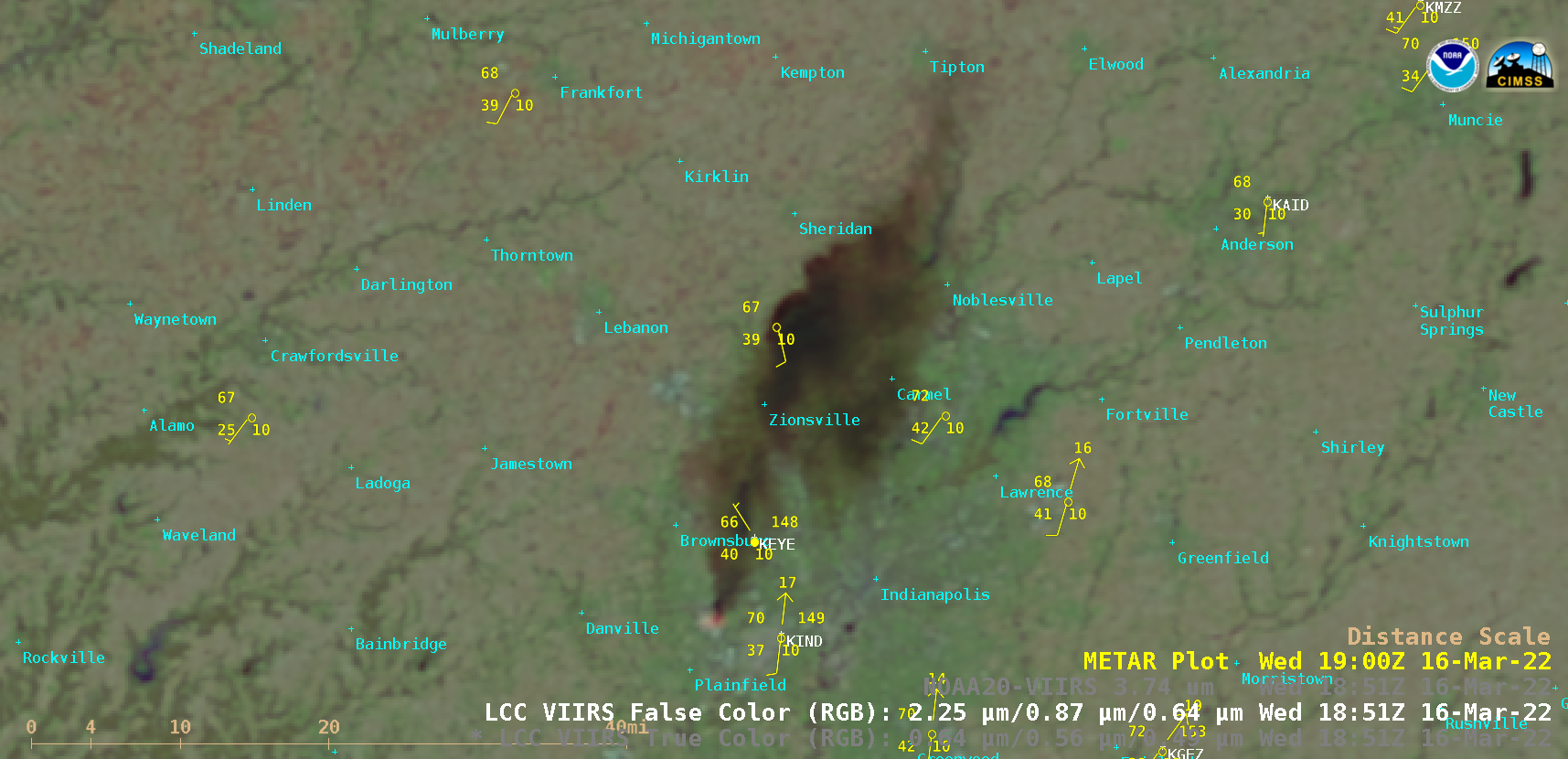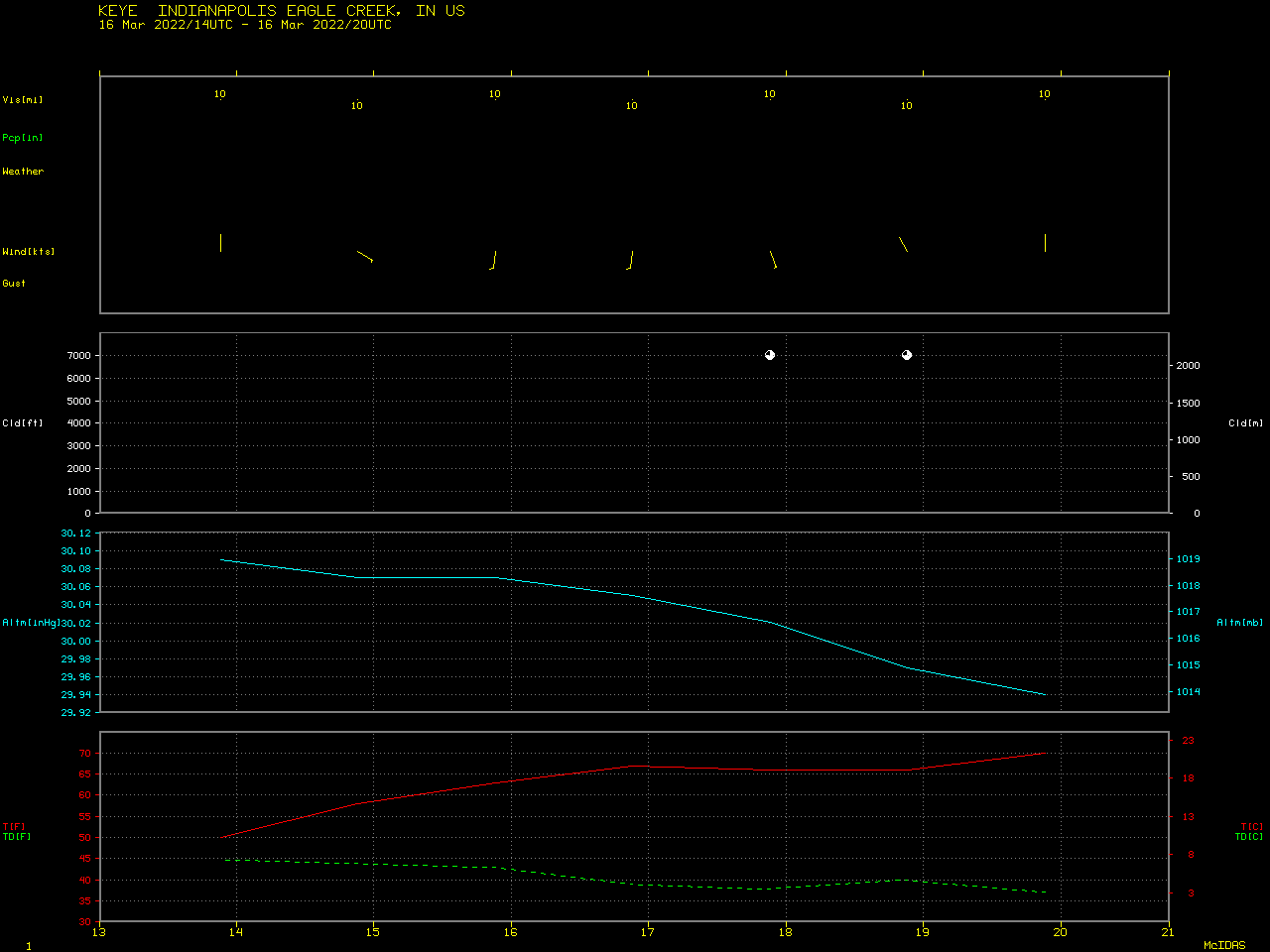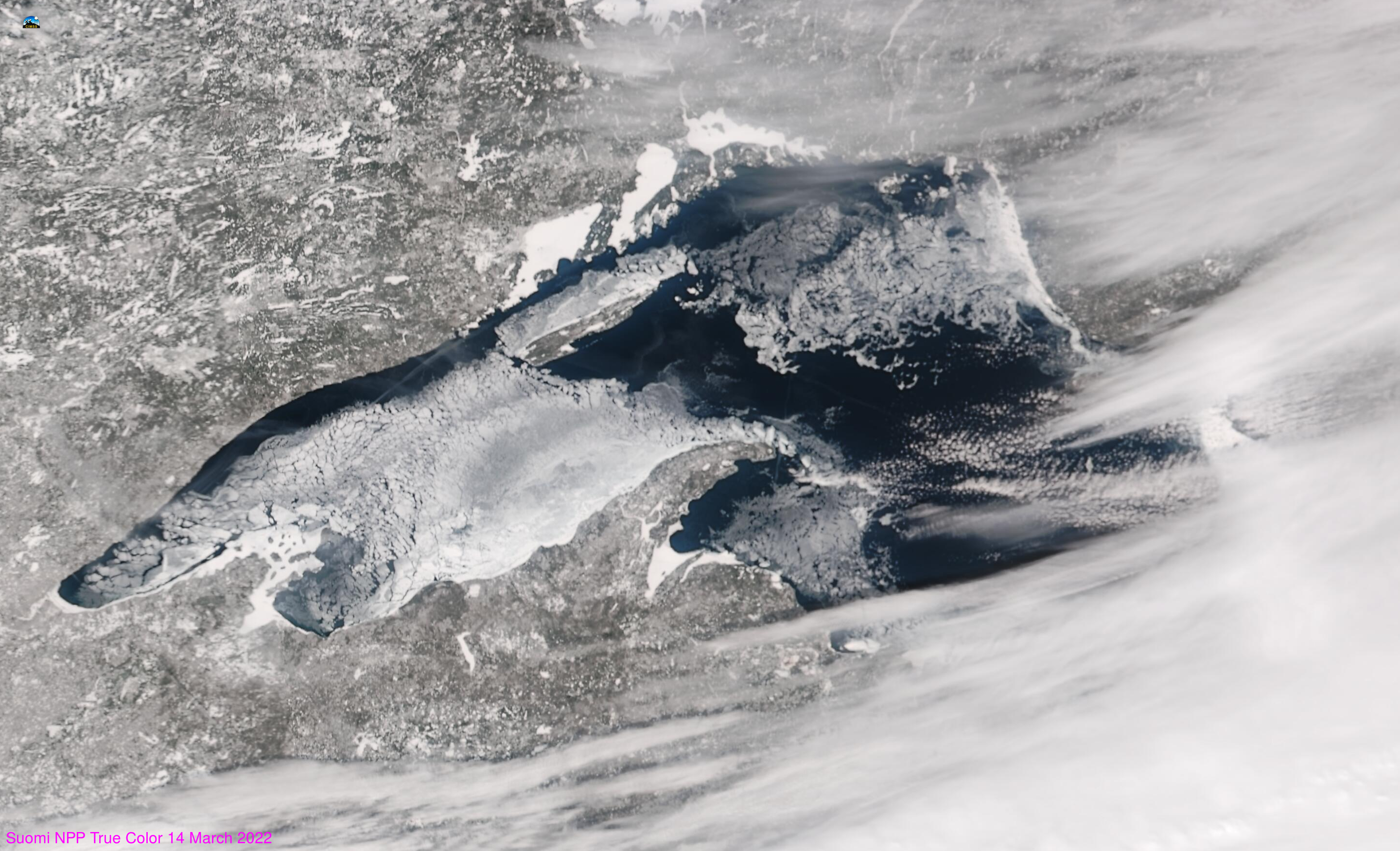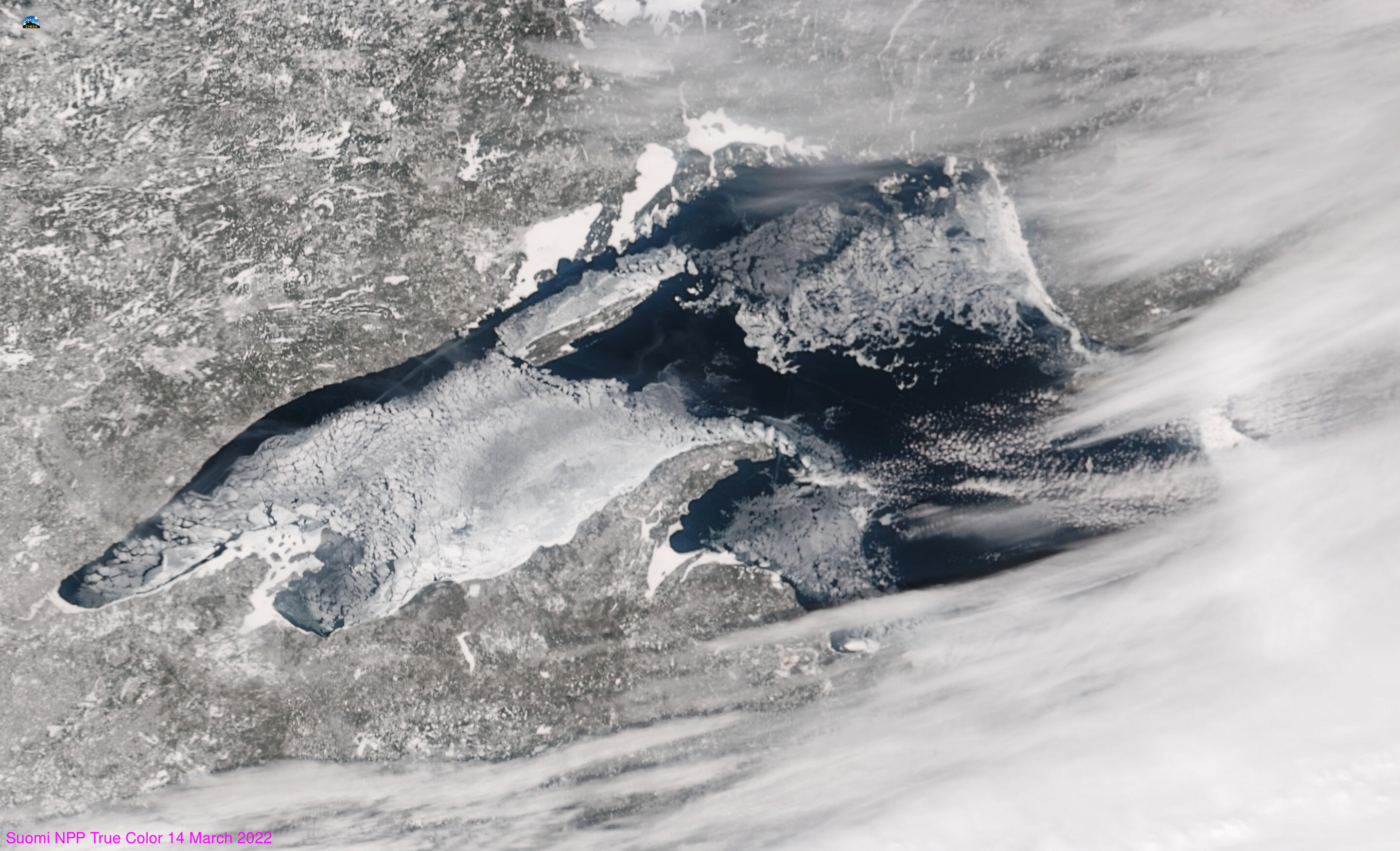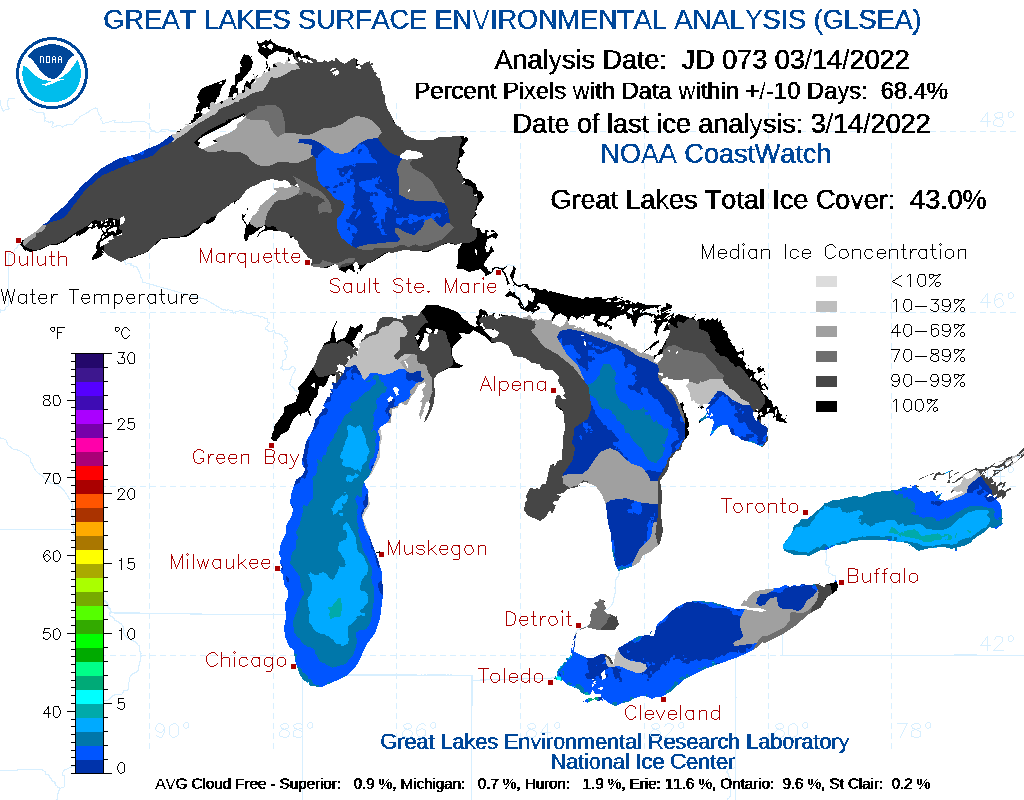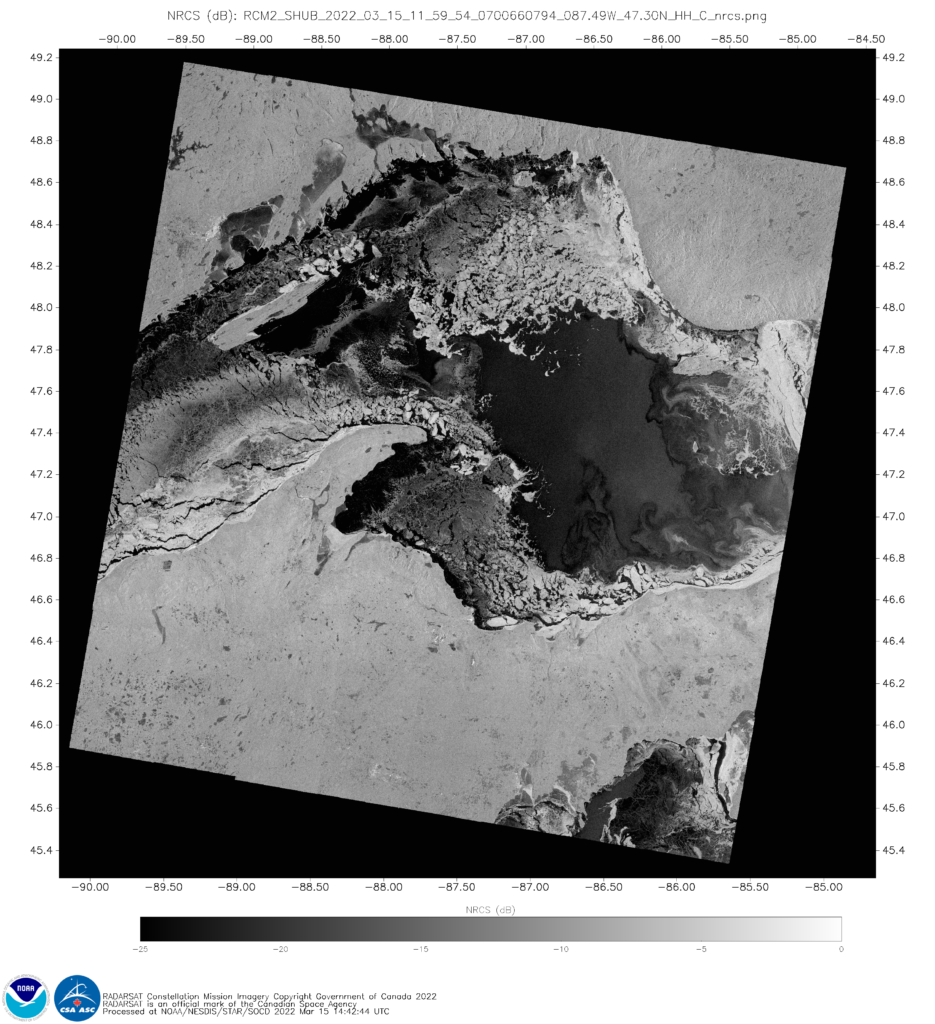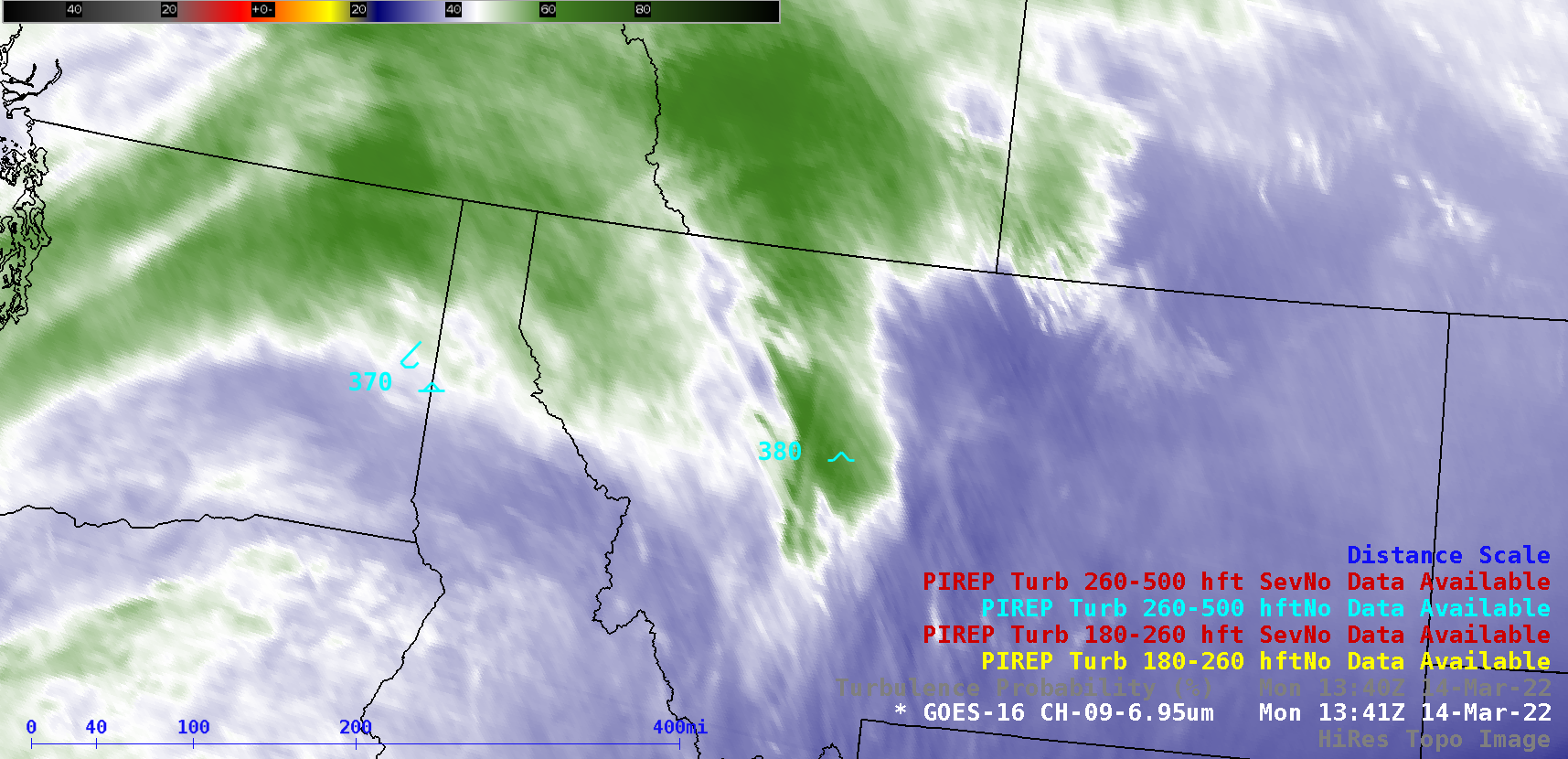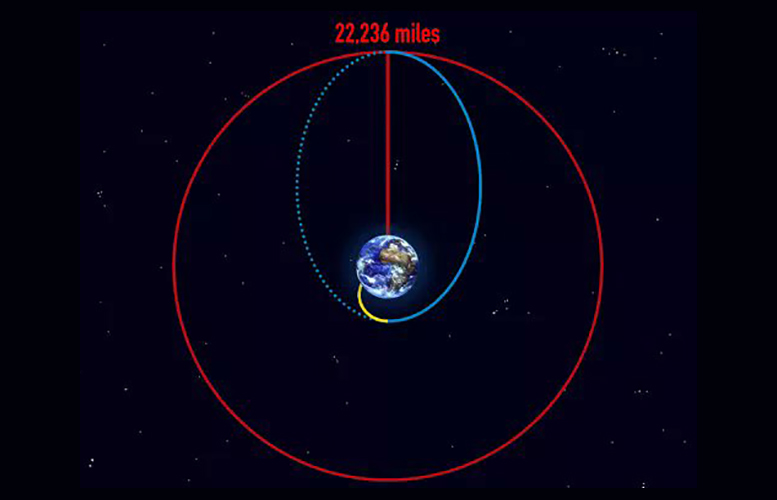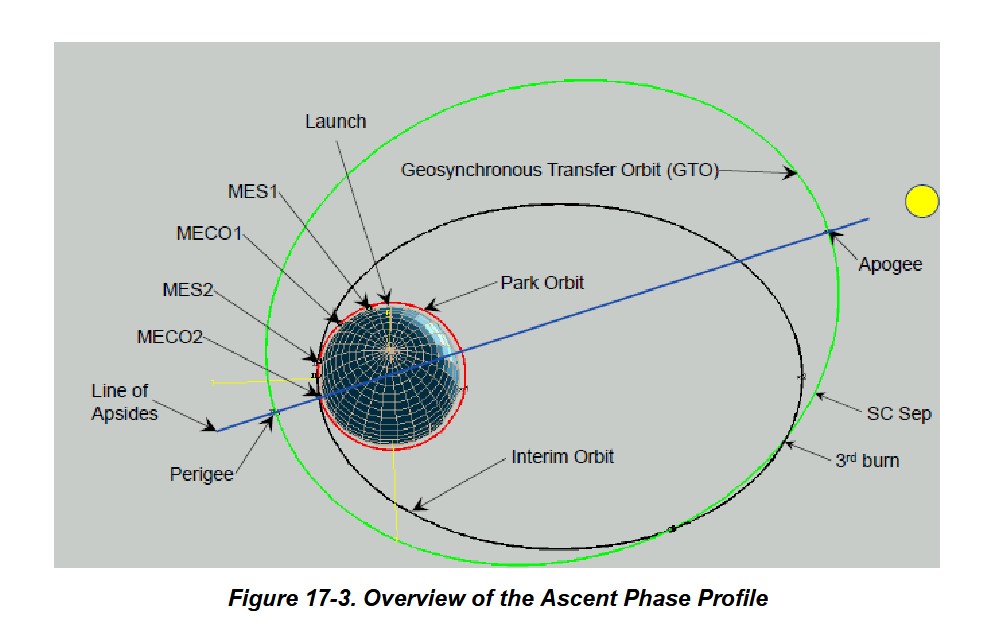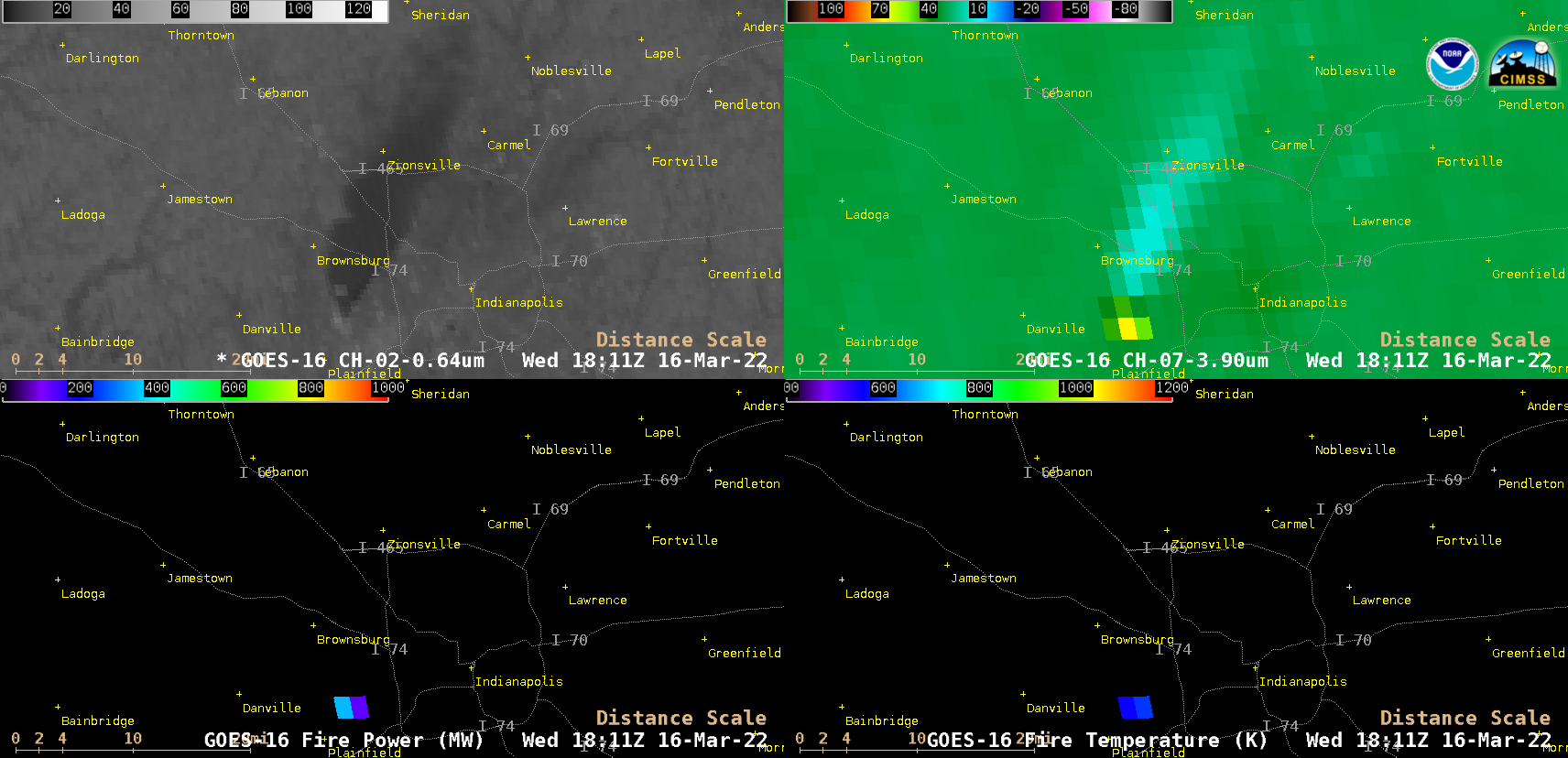
GOES-16 “Red” Visible (0.64 µm, top left), Shortwave Infrared (3.9 µm, top right), Fire Power (bottom left) and Fire Temperature (bottom right) products [click to play animated GIF | MP4]
GOES-16 (GOES-East) “Red” Visible (0.64 µm), Shortwave Infrared (3.9 µm). Fire Power and Fire Temperature products (above) displayed signatures of a fire at the Walmart Distribution Center in Plainfield, Indiana on 16 March 2022. The fire was first detected at 1646 UTC, and an hour later the 3.9 µm Shortwave Infrared brightness temperature reached 74.1ºC at 1746 UTC — the maximum derived Fire Temperature value was 580.74 K, and Fire Power values peaked at 433.72 MW (the Fire Temperature and Fire Power derived products are components of the GOES Fire Detection and Characterization Algorithm FDCA).
GOES-16 True Color RGB images from the CSPP GeoSphere site are shown below; the initial cloud of dark black smoke began to move across the Indiana/Ohio border around 23 UTC.

GOES-16 True Color RGB images [click to play animated GIF | MP4]
A sequence of VIIRS True Color RGB, False Color RGB and Shortwave Infrared (3.74 µm) images from NOAA-20 and Suomi-NPP are shown below. These VIIRS images were acquired and processed by the Direct Broadcast ground station at SSEC/CIMSS — and are available for display in AWIPS via a Unidata LDM subscription.

VIIRS True Color RGB, False Color RGB and Shortwave Infrared (3.74 µm) images from NOAA-20 and Suomi-NPP [click to enlarge]
The eastern edge of the smoke plume passed over Indianapolis Eagle Creek Airport (KEYE), located about 5 miles north-northeast of the fire — since the smoke had been lofted to altitudes of 7,000-10,000 feet, it did not affect the surface visibility at that site.
View only this post Read Less


